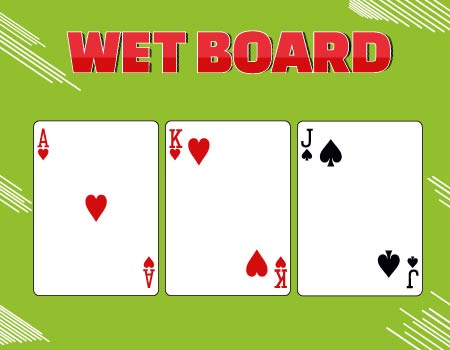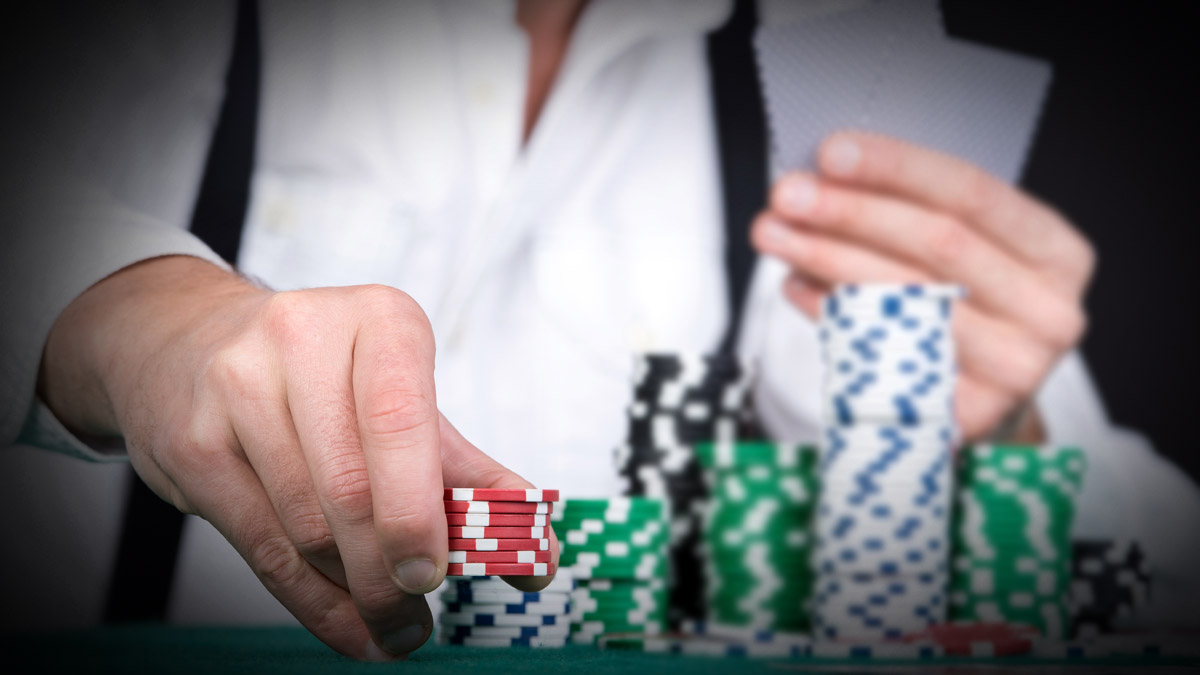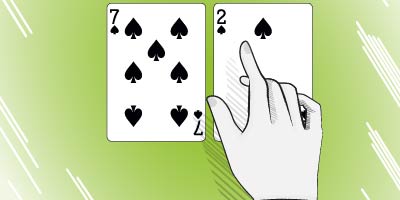- Poker Optimal Bluffing Frequency Calculator
- Poker Optimal Bluffing Frequency Analyzer
- Poker Optimal Bluffing Frequency Definition
- Poker Optimal Bluffing Frequency Examples
OPTIMAL BLUFFING FREQUENCIES 3 In, a strategic equilibrium for the game we introduced is outlined as follows. The optimal strategy for Player II is to fold if yb, for some b20;1. Player II chooses bto make Player I indierent between betting and folding when Player I has some hand x. The term 'GTO' (standing for 'Game Theory Optimal') has been thrown around a lot in the poker world over recent years. To clarify its meaning and application, the aim of this article is to define what it is, when to use it when playing, what strategies to apply for how to play GTO poker, for beginner and more advanced players!

- Alice may decide to penalize a possible bluff (with a frequency α), and Bob may have decided to bluff (with frequency β). If Bob has a weak hand, the choice for him is between bluffing or pass.
- Below are 4 common ways in which poker game theory can be put to use at the table. Poker Game Theory Application #1 – Optimal Bluffing Frequency. As made famous by David Sklansky the idea is that you should bluff with a busted hand on the river at the same frequency as the odds you are offering your opponent from the pot.
Golden nugget casino lake charles concerts. There's a buzz word in the poker world these days that you may have heard, but many new players aren't yet familiar with it. That buzz is GTO.

GTO stands for Game Theory Optimal. What it means is using an unexploitable strategy, which cannot be countered by your opponent. In this article I'm going to explain what it is, tell you why you should learn about it, and then explain why you shouldn't be focusing on it in games.
So for starters, what does that mean, an unexploitable strategy? You will also hear the word balanced or balancing used in these discussions. I think the easiest way to explain this is with a basic example:

Poker Optimal Bluffing Frequency Calculator
Let's say there is $100 in the pot, and you bet $100 on the river. Your opponent, who has a medium strength hand (a bluff catcher, something like JT on a board of QJ963), has to now decide whether or not to call this final river bet. They have to call $100 to win the $200 now in the pot. Therefore the call must be right 1/3rd of the time. If it is right exactly this often, the call breaks even over the long run (losing $100 each of the two times it's wrong, and winning $200 the one time it's right). And they have a hand strength that will lose to everything you are betting for value, and beat everything you're bluffing with. Now, if they had a read that you were a conservative player that never bluffs the river, then they can easily fold to this bet. Conversely, if you were a known wild bluffer, they can easily call knowing they'll catch you well more than 1/3rd of the time with a bluff. Let's say, however, that you bet your range of hands on the river such that you are value betting 2/3rds of the time and bluffing 1/3rd. This is the unexploitable strategy… your opponent is now indifferent to calling or folding. If they call all the time, they will break even by catching you bluffing at the precise frequency that the pot odds are offering them, netting them zero won/lost over the long term (and if they fold all the time by definition they win/lose zero on the river over the long term). So you are bluffing at a GTO frequency, making this river bet unexploitable… it doesn't matter if they call or fold.
Why should you learn about GTO strategies? I think you may start to see from the example, that learning about GTO strategies involves topics like basic math, odds, ranges, and frequencies. As you study these things, you'll develop a much stronger sense of constructing solid ranges, so when you get to the river in a hand you have a more balanced range… in the case of the example above, picking the appropriate number of value bets vs. bluffs. And learning what types of hands are better to bluff with given the board texture, situation, and bet sizing. A firm grasp of these concepts will help you to make much better decisions, understand situations and ranges better, and help control your opponents through keeping proper frequencies, and exploiting their frequencies (like in the example above, if you were a known bluffer or a known non-bluffer, those are lopsided frequencies that can be exploited by calling down frequently, or not calling down with any marginal made hands at all. These are all concepts that fall under the umbrella of GTO play. Learning this will not only strengthen your understanding of the game a great deal, but also prepare you to play against other very strong players who also understand these concepts. If you are in a tournament heads up against Fedor Holz, playing a GTO strategy will prevent Fedor (or any expert) from being able to exploit you.
Poker Optimal Bluffing Frequency Analyzer
Now that we've talked about what GTO means, and why it's a good thing to learn more about, let's talk about why you should not be focusing on doing this in your games. This comment may surprise you. This GTO business sounds pretty nice. I should work on it away from the tables to strengthen my game. But now in the heat of battle, not use it? That's right. The reason is, for most readers, you will be playing against opponents who make many frequent mistakes. And thus, although a GTO strategy will be profitable against them, an exploitative strategy will do even better. For instance, in our example above, we know that when we bet $100 into $100, the GTO bluffing frequency is 33% to make our opponent indifferent to calling or folding. If our opponent is a world class player who excels at reading their opponents, this forced indifference is a good thing… by default they cannot get the best of us. Most of your opponents, however, will not be Fedor Holz or Phil Ivey. Especially in the micro and small stakes games, they will be making many frequency mistakes.

- Alice may decide to penalize a possible bluff (with a frequency α), and Bob may have decided to bluff (with frequency β). If Bob has a weak hand, the choice for him is between bluffing or pass.
- Below are 4 common ways in which poker game theory can be put to use at the table. Poker Game Theory Application #1 – Optimal Bluffing Frequency. As made famous by David Sklansky the idea is that you should bluff with a busted hand on the river at the same frequency as the odds you are offering your opponent from the pot.
Golden nugget casino lake charles concerts. There's a buzz word in the poker world these days that you may have heard, but many new players aren't yet familiar with it. That buzz is GTO.
GTO stands for Game Theory Optimal. What it means is using an unexploitable strategy, which cannot be countered by your opponent. In this article I'm going to explain what it is, tell you why you should learn about it, and then explain why you shouldn't be focusing on it in games.
So for starters, what does that mean, an unexploitable strategy? You will also hear the word balanced or balancing used in these discussions. I think the easiest way to explain this is with a basic example:
Poker Optimal Bluffing Frequency Calculator
Let's say there is $100 in the pot, and you bet $100 on the river. Your opponent, who has a medium strength hand (a bluff catcher, something like JT on a board of QJ963), has to now decide whether or not to call this final river bet. They have to call $100 to win the $200 now in the pot. Therefore the call must be right 1/3rd of the time. If it is right exactly this often, the call breaks even over the long run (losing $100 each of the two times it's wrong, and winning $200 the one time it's right). And they have a hand strength that will lose to everything you are betting for value, and beat everything you're bluffing with. Now, if they had a read that you were a conservative player that never bluffs the river, then they can easily fold to this bet. Conversely, if you were a known wild bluffer, they can easily call knowing they'll catch you well more than 1/3rd of the time with a bluff. Let's say, however, that you bet your range of hands on the river such that you are value betting 2/3rds of the time and bluffing 1/3rd. This is the unexploitable strategy… your opponent is now indifferent to calling or folding. If they call all the time, they will break even by catching you bluffing at the precise frequency that the pot odds are offering them, netting them zero won/lost over the long term (and if they fold all the time by definition they win/lose zero on the river over the long term). So you are bluffing at a GTO frequency, making this river bet unexploitable… it doesn't matter if they call or fold.
Why should you learn about GTO strategies? I think you may start to see from the example, that learning about GTO strategies involves topics like basic math, odds, ranges, and frequencies. As you study these things, you'll develop a much stronger sense of constructing solid ranges, so when you get to the river in a hand you have a more balanced range… in the case of the example above, picking the appropriate number of value bets vs. bluffs. And learning what types of hands are better to bluff with given the board texture, situation, and bet sizing. A firm grasp of these concepts will help you to make much better decisions, understand situations and ranges better, and help control your opponents through keeping proper frequencies, and exploiting their frequencies (like in the example above, if you were a known bluffer or a known non-bluffer, those are lopsided frequencies that can be exploited by calling down frequently, or not calling down with any marginal made hands at all. These are all concepts that fall under the umbrella of GTO play. Learning this will not only strengthen your understanding of the game a great deal, but also prepare you to play against other very strong players who also understand these concepts. If you are in a tournament heads up against Fedor Holz, playing a GTO strategy will prevent Fedor (or any expert) from being able to exploit you.
Poker Optimal Bluffing Frequency Analyzer
Now that we've talked about what GTO means, and why it's a good thing to learn more about, let's talk about why you should not be focusing on doing this in your games. This comment may surprise you. This GTO business sounds pretty nice. I should work on it away from the tables to strengthen my game. But now in the heat of battle, not use it? That's right. The reason is, for most readers, you will be playing against opponents who make many frequent mistakes. And thus, although a GTO strategy will be profitable against them, an exploitative strategy will do even better. For instance, in our example above, we know that when we bet $100 into $100, the GTO bluffing frequency is 33% to make our opponent indifferent to calling or folding. If our opponent is a world class player who excels at reading their opponents, this forced indifference is a good thing… by default they cannot get the best of us. Most of your opponents, however, will not be Fedor Holz or Phil Ivey. Especially in the micro and small stakes games, they will be making many frequency mistakes.
So for instance, if your opponent were a tight/conservative player who never calls big river bets without a monster hand, then we will make quite a bit more money over time by bluffing at a higher frequency than 33%. In fact against this player a much better strategy might be to value bet much tighter/stronger hands, and add in more bluffs from our range so that we may be betting with 20% value bets (our strongest hands only) and 80% bluffs. This is a frequency that is well out of balance, and our opponent could easily exploit us by calling down much lighter (a common adjustment to someone who bluffs too much). But unlike the world class player, they won't recognize this and exploit us, they'll just keep folding too much. Or on the other side of that coin, if our opponent is a calling station that calls down with any pair or even ace highs, then we can exploit that by betting much wider for value (2nd pair may be an easy value bet vs. this type of calling station), and not bluffing much if at all. Again, a strong player can easily exploit us if our river bets are always value bets and never bluffs by simply folding all medium strength bluff catchers to our bet. But our calling station friend won't, they'll just call, providing us much more value long term than the GTO value bet/bluff frequency would.
Poker Optimal Bluffing Frequency Definition
The study of GTO strategies isn't for the beginning player. But once you have the basics down and as you advance your game, it becomes an integral part of a more advanced poker strategy.
Poker Optimal Bluffing Frequency Examples
Join us on our Discord channel. San juan marriott stellaris casino puerto rico reviews yelp.